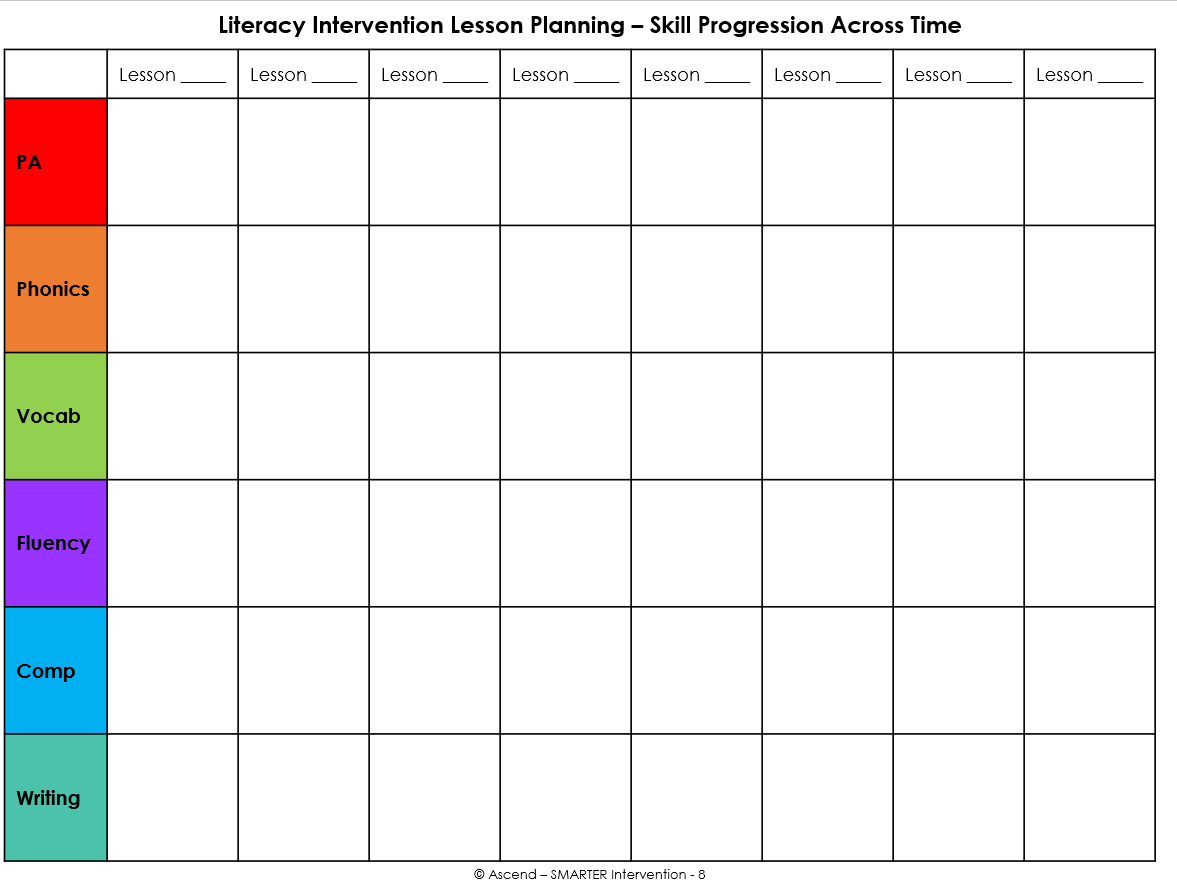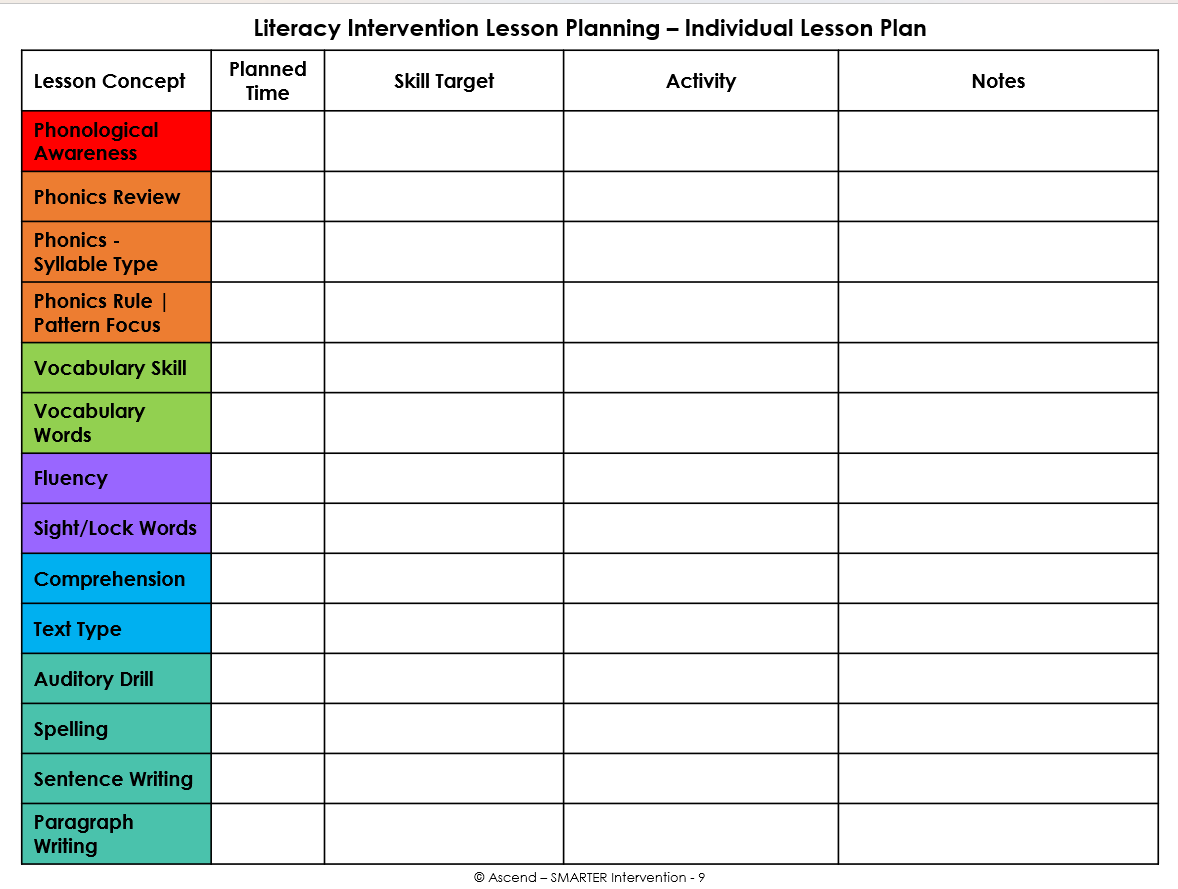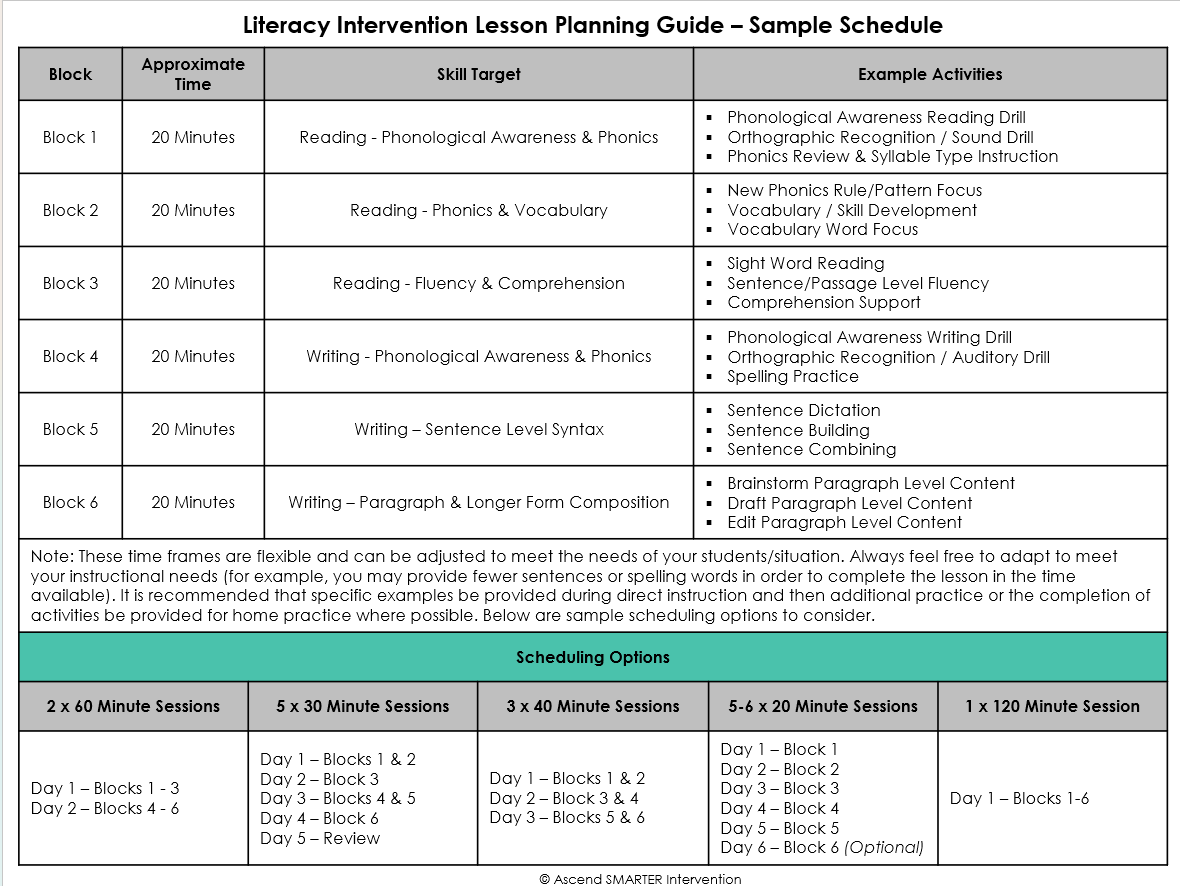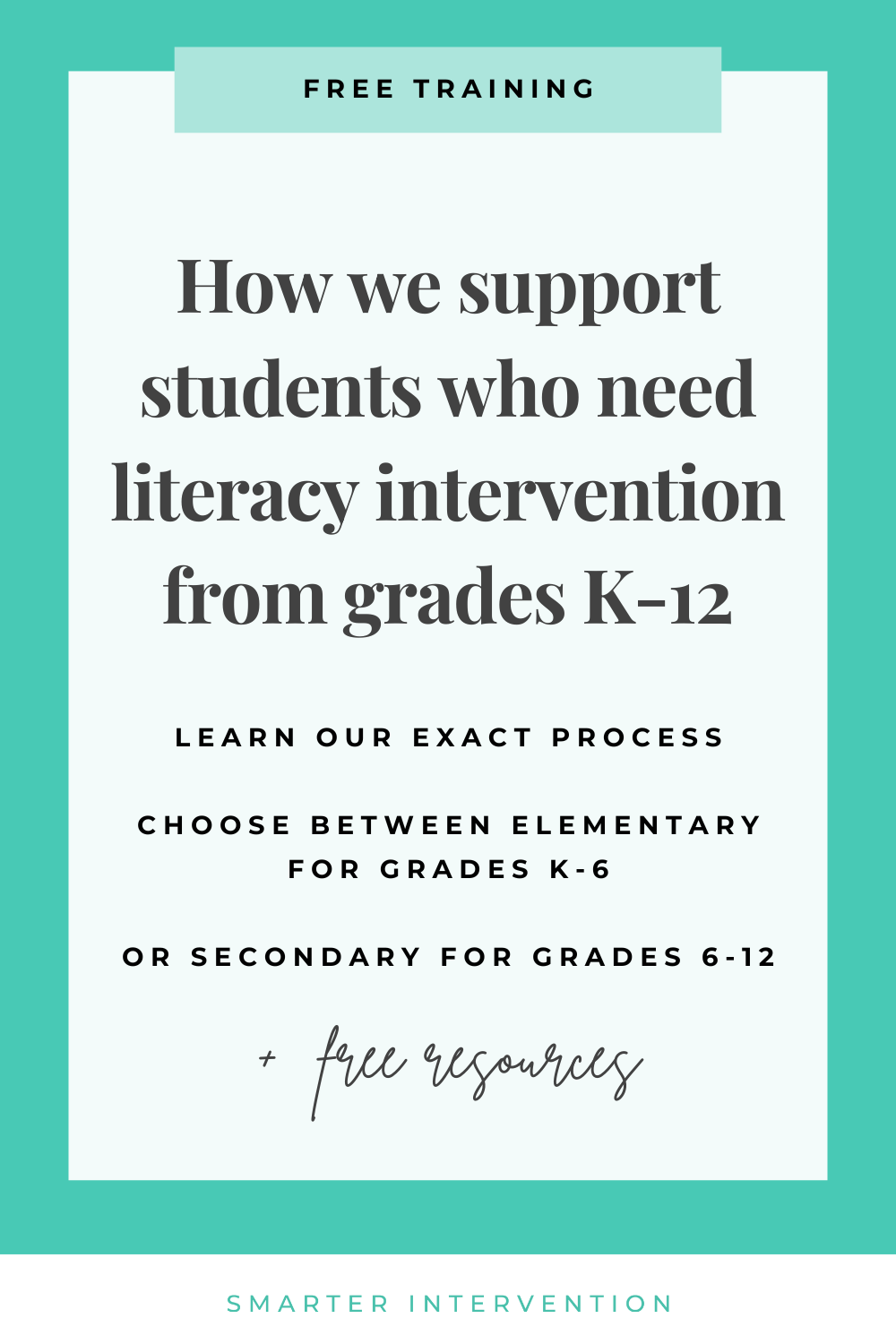How to Build a Literacy Intervention Sequence That Works (Without Getting Overwhelmed)
Let’s take the guesswork out of literacy intervention.
If you’ve ever felt like you’re just trying to survive each week of intervention (grabbing what you can, piecing together lessons, or wondering if your instruction is actually building toward anything), you’re not alone.
We’ve been there too.
And we’ve learned that the key to reducing stress and getting results is thinking systematically.
But that doesn’t mean rigid scripts or unrealistic schedules.
It means building a plan that fits:
How long you’ll work with your students
How often you’ll see them
And what foundational skills they truly need
In this post, we’ll walk you through how to sequence your lessons step by step using the planning framework we use with our own students, and we’ll even give you a free copy of the templates so you can do the same.
Step 1: Start with Your Timeline
What’s your program length over the course of your instruction?
Start by asking:
How long will I be working with this student? (6 weeks? Semester? All year?)
This helps you determine how many total lessons you’ll likely deliver, and gives you the realistic boundaries you need to build your plan.
Want a copy of this planning tool? Download it free here.
Step 2: Build Your Weekly Instructional Sequence
Next, you want to consider how to break each lesson into predictable components.
Ask yourself:
How many sessions per week will I have with them?
How long is each session?
Once you know how much time you have, it’s time to think about how you’ll use that time consistently across each lesson.
We recommend using a framework that touches on each of the five core components of reading plus writing, and building those into every session with small, purposeful routines.
This makes instruction feel predictable, effective, and manageable, for both you and your students.
Want the full lesson planning template? Grab it here.
Step 3: Adjust for Your Weekly Schedule
Create a plan that fits your schedule.
What if you only have two sessions a week? Or just 30 minutes per day?
That’s okay.
Use your total available time to build instructional blocks across the week, based on what you know your students need most. It’s more about intentionality than perfection.
This guide is included in the free download.
Final Thoughts: Start Simple, Then Adjust
You don’t need to have it all figured out. Just start with:
What time you have
What skills your students need
And a predictable structure that helps you get there, lesson by lesson
And if you’re ready to go deeper…
Join us for one of our FREE on-demand PD trainings to learn more about the 5-step framework we use in our intervention.
If you work in the elementary setting - Check out our training, “Delivering Effective Elementary Literacy Intervention: The 5-Step Framework for Grades K-6 to learn more and get free resources you can use to support your instruction!
If you work in the secondary setting - Check out Delivering Effective Secondary Literacy Intervention: The 5-Step Framework for Grades 6–12 to learn more and get free resources you can use to support your instruction this year!





